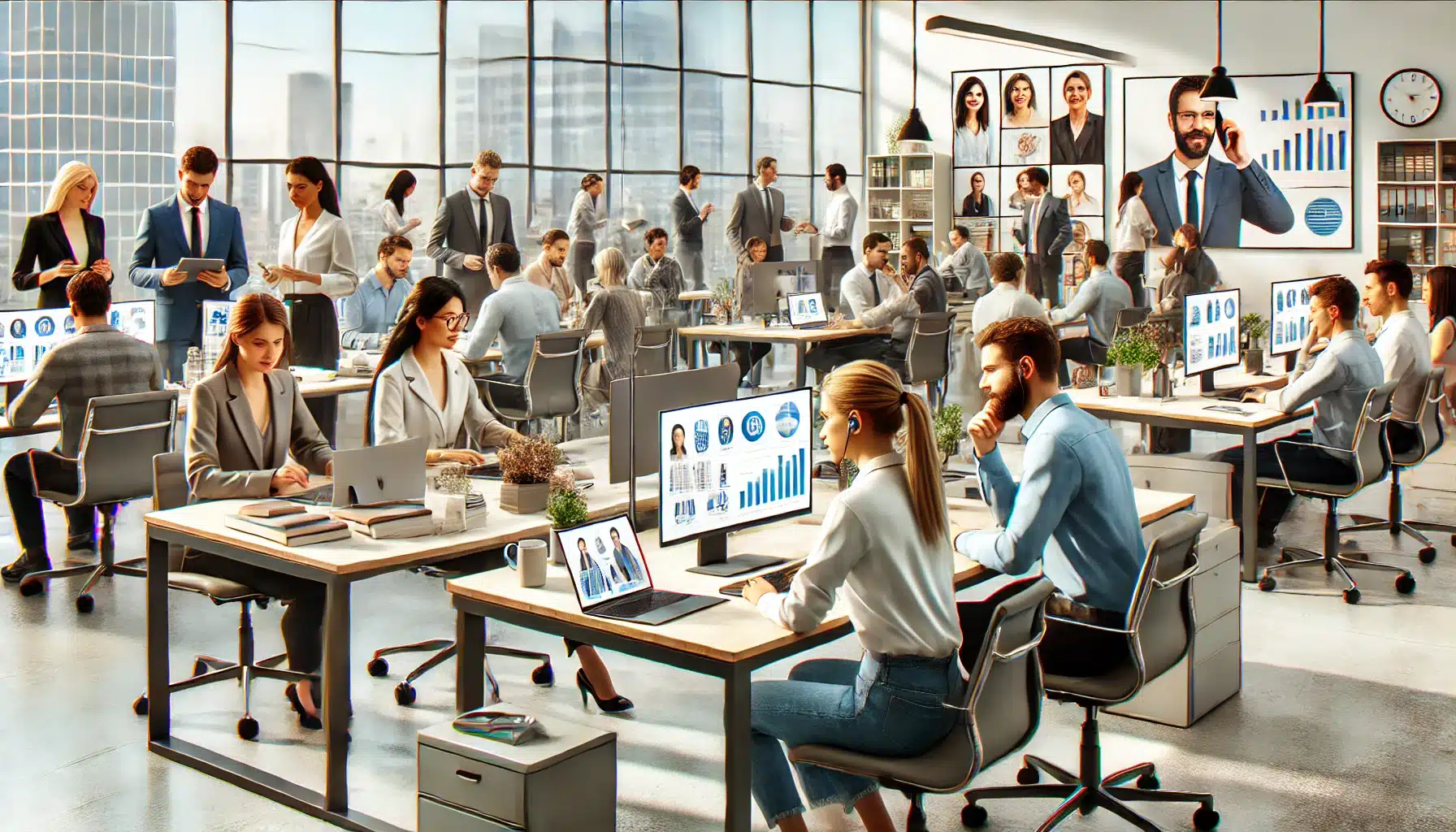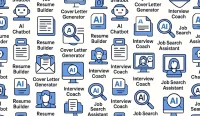The US labor market continues to face significant challenges, with industries across the board struggling to fill positions.
This shortage, known as “The Great Resignation,” began during the pandemic and has persisted well into the 2020s.
Today, many sectors are still dealing with high quit rates, hiring difficulties, and shifts in workforce dynamics.
Industries Most Affected by the Labor Shortage
Data from the US Chamber of Commerce shows several industries are experiencing severe workforce shortages, with some sectors hit harder than others.
These industries are grappling with the highest turnover rates and the toughest hiring conditions:
Leisure and Hospitality
This sector has been among the hardest hit by labor shortages. Many workers left during the pandemic and have not returned.
As of 2023, the quit rate in leisure and hospitality remained significantly above the national average.
- High Quit Rates: Many workers in this industry are leaving for better pay, more flexible hours, or remote work opportunities.
- Challenges in Hiring: Companies are struggling to fill positions, particularly in areas like food service, hotels, and event planning.

Healthcare
Healthcare has also been severely impacted by the labor shortage. The pandemic placed tremendous strain on healthcare workers, leading many to retire early or leave the profession altogether.
- Increased Demand for Healthcare Workers: With an aging population and greater healthcare needs, the demand for professionals like nurses and doctors has surged.
- Staffing Shortages: Facilities across the country are having difficulty filling key roles, particularly in rural and underserved areas.
Professional Services
The professional services industry, including sectors like accounting, legal services, and consulting, has also faced challenges. Although these jobs typically require specialized skills, the shortage has persisted.
- Shifts in Worker Preferences: Many professionals are now seeking greater work-life balance or exploring freelance and gig economy opportunities.
- Competitive Job Market: Employers in this sector are finding it difficult to attract qualified talent due to stiff competition.
Manufacturing and Construction
While manufacturing and construction jobs are plentiful, many positions remain unfilled. Manufacturing faces shortages due to factors like automation, skills gaps, and an aging workforce.
Similarly, the construction industry is struggling to attract younger workers despite high demand for housing and infrastructure projects.
- Aging Workforce: Both manufacturing and construction sectors are seeing an aging workforce, with many older workers retiring and fewer younger workers entering the field.
- High Vacancy Rates: Despite strong demand, companies are finding it hard to hire skilled workers, leading to delays in projects.
Why Is the Labor Shortage Happening?
There are several reasons contributing to the ongoing labor shortage:
Low Labor Force Participation
The labor force participation rate remains below pre-pandemic levels. Some people have chosen to leave the workforce entirely, citing factors like early retirement, caregiving responsibilities, or health concerns.
- Baby Boomer Retirements: A significant portion of the workforce is aging out, with many Baby Boomers retiring earlier than expected.
- Caring for Family: With more flexible work arrangements, many workers are leaving traditional jobs to care for family members or start businesses.
Changing Worker Preferences
Post-pandemic, many employees are reevaluating their career choices. Workers are seeking more flexibility, remote work options, and better pay. The pandemic forced many companies to adopt remote work policies, and now workers expect these arrangements to remain in place.
- Work-Life Balance: Employees are prioritizing mental health, flexible hours, and more control over their schedules.
- Higher Pay: Workers are increasingly seeking higher wages and better benefits in order to make up for the costs of living and rising inflation.
Limited Skillset Availability
Certain industries, particularly manufacturing, healthcare, and technology, require specialized skills. There is a growing gap between the skills employers need and the skills workers possess, creating a mismatch in the labor market.
- Skills Gap: The rapid pace of technological advancement and automation means that many workers are not prepared for the jobs available in these industries.
- Training Deficits: Companies are often forced to spend additional resources on training new employees, which only adds to the hiring difficulties.
Hiring? Post jobs for free with WhatJobs
What Can Be Done to Solve the Labor Shortage?
Addressing the labor shortage will require a combination of strategies, both short and long-term:
Improve Benefits and Work Conditions
Employers need to offer more attractive compensation packages and benefits to draw in and retain workers. This includes higher wages, health benefits, and enhanced work-life balance policies.
- Childcare Support: Employers can offer childcare subsidies or flexible work hours to help workers balance family and work commitments.
- Remote Work Opportunities: Expanding remote work policies can help attract workers who prefer flexible work arrangements.
Invest in Worker Training
Closing the skills gap is essential to addressing the labor shortage. Investing in training and upskilling programs can ensure workers are prepared for the jobs available.
- Apprenticeships and Internships: These programs can help workers gain practical experience in fields like manufacturing, construction, and healthcare.
- Reskilling Initiatives: Encouraging workers to learn new skills, particularly in technology and specialized trades, can improve the labor supply.
Encourage Labor Force Participation
Finding ways to get more people back into the workforce is crucial. This might include policies that encourage older workers to remain employed longer or creating better opportunities for workers with disabilities.
- Incentives for Older Workers: Providing financial incentives for older workers to delay retirement could help alleviate some of the shortages.
- Diversity and Inclusion Initiatives: Ensuring that job opportunities are accessible to a diverse group of workers, including those with disabilities, can widen the talent pool.
Need Career Advice? Get employment skills advice at all levels of your career
Looking Ahead: Navigating the Labor Crisis
The labor shortage is likely to persist in the near future, affecting multiple industries across the U.S. To adapt, employers must focus on improving work conditions, investing in worker training, and providing better compensation. Only then can the U.S. start to address the pressing labor shortages that are holding back economic growth.
By prioritizing these strategies, industries can hope to attract and retain a capable workforce in the years to come.
FAQS
What is causing the labor shortage in America?
The labor shortage in America is driven by several factors. A significant cause is the low labor force participation rate, which remains below pre-pandemic levels. Many older workers retired early, and some individuals are reluctant to return to in-person work due to health concerns, particularly related to COVID-19. Additionally, caregiving responsibilities, such as looking after children or elderly family members, have kept many people out of the workforce, especially since affordable childcare options are limited.
Another factor is the shift in worker preferences. The pandemic prompted a reevaluation of work-life balance, with many people now prioritizing flexibility. Remote work options have become essential for a growing number of employees. Many are also seeking higher wages, better benefits, and more fulfilling roles, pushing them to leave industries that offer less flexibility or lower pay.
The skills gap is another significant issue, particularly in sectors like manufacturing and healthcare. There’s a mismatch between the skills needed by employers and those available in the labor market. As a result, many companies are struggling to fill vacant positions, especially in specialized fields. These factors combined are creating long-term challenges for the U.S. labor market.
What are the effects of labour shortage?
The labor shortage in the U.S. is having significant effects across various sectors of the economy. One of the most immediate consequences is delayed services. Many industries, particularly healthcare, hospitality, and retail, are struggling to provide timely services due to a lack of staff. This can lead to longer wait times for customers and a decrease in overall customer satisfaction.
Another impact is the rising wages in industries with the greatest demand for workers. Employers are offering higher pay to attract and retain employees, leading to increased labor costs. While this helps workers, it also raises operational costs for businesses, particularly small ones, and can contribute to inflationary pressure.
Reduced productivity is also a major effect. With fewer workers available, businesses are often forced to reduce output or operate at lower efficiency. This can hinder economic growth, especially in labor-intensive sectors like construction and manufacturing.
Additionally, the labor shortage can cause higher employee burnout. With fewer workers in the pool, remaining employees may be required to take on more responsibilities, leading to stress and a decline in job satisfaction.
Lastly, the labor shortage impacts innovation. Without enough skilled workers, companies may struggle to develop new products or services, stalling growth and innovation in key industries.
Which effect is most associated with shortage of labor?
The effect most closely associated with a shortage of labor is rising wages. As companies struggle to find and retain employees, they often raise wages to attract workers, particularly in sectors experiencing the most severe shortages. This increase in pay is a direct response to the higher demand for workers and the limited supply of available labor. While this can benefit workers in the short term, it also leads to increased labor costs for businesses, which may be passed on to consumers in the form of higher prices, contributing to inflation.
What jobs are in the biggest shortage?
Several sectors are experiencing significant labor shortages in the U.S. due to high demand and a limited supply of workers. In healthcare, there is a shortage of professionals such as nurses, doctors, and long-term care staff. The pandemic worsened existing shortages, with many workers retiring early or leaving the profession due to burnout. The hospitality and food service industry, including restaurants, hotels, and event planning, is also struggling to fill positions like waitstaff, chefs, housekeepers, and hotel front desk staff. Skilled trades such as electricians, plumbers, and carpenters are in high demand, driven by an aging workforce and a lack of younger workers entering these fields. The technology industry is facing a shortage of software developers, cybersecurity experts, and data scientists as the demand for digital services and innovation continues to grow.




